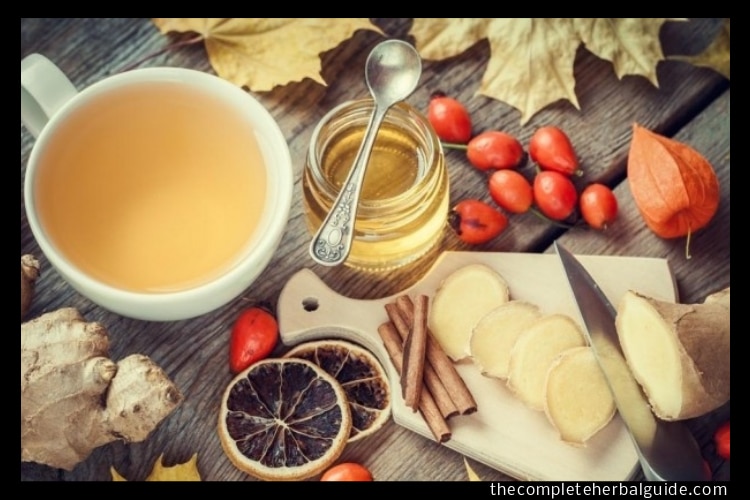
Butterbur: The Herb that Relieves Migraines, Allergies, Asthma & More
By Charles Platt
In this article, you’ll learn about butterbur and discover how this herb relieves migraines, allergies, asthma and more.
Every year, nearly a million people in the United States end up in the emergency room seeking relief from debilitating migraine pain. Severe migraine headaches remain an unresolved medical issue for millions of people despite the availability of powerful drugs and specialty migraine clinics.
For most people, taming their migraines is an ongoing series of trial and error events using various medications and stress-reduction therapies. For some, however, the very drugs taken to resolve a migraine may actually create a chronic migraine condition.2 Alarming studies have even shown that those who suffer from a certain type of migraine are at risk for a life-threatening cardiovascular disease.
Given the severity of the problem, alternative methods are urgently needed to deal with this serious health issue. Clinical studies from Germany have positively confirmed that an herbal extract known as butterbur (Petasites hybridus) may cut the frequency of migraine headaches by up to 50% in long-term migraine sufferers.4-7 Sadly, many Americans still remain unaware of this unique supplement, which has been shown to be as effective as many prescription medications in preventing migraine with far fewer side effects.
Table of Contents
Find a Healthy Solution

Butterbur is an herb. People use the leaf, root, and bulb to make medicine. Some butterbur preparations contain chemicals called pyrrolizidine alkaloids (PAs), which can damage the liver and cause other serious harm. Only butterbur products that are certified and labeled “PA-free” should be used.
Butterbur is used for pain, upset stomach, stomach ulcers, migraine and other headaches, ongoing cough, chills, anxiety, plague, fever, trouble sleeping (insomnia), whooping cough, asthma, hay fever (allergic rhinitis), and for irritable bladder and urinary tract spasms. Butterbur is also used to stimulate appetite.
Some people apply butterbur to the skin to improve wound healing.
Causes
Migraines can be triggered by stress, tension, anxiety, and insufficient food or sleep. Intense sensory stimuli such as bright lights, loud noise, cigarette smoke, and strong odors may also precipitate migraine in susceptible individuals. In addition, specific food products can bring on migraines such as chocolate, aged cheeses, wine, beer, caffeine, and monosodium glutamate. Because migraines can be triggered by fluctuations in estrogen, women may experience episodes immediately before menstruation or if they start oral contraceptives or conventional, non-bioidentical hormone-replacement therapy.
Research indicates that abnormal electrical changes in the brain can help trigger migraine. These changes may be linked with low levels of magnesium and high levels of calcium and glutamate.13 First, there is a wave of neuronal excitation that is followed by a wave of depression in a phenomenon known as cortical spreading depression. These changes in electrical activity passing through nerve cells stimulate the release of peptides and other pro-inflammatory substances that irritate nerves causing pain particularly in the trigeminal system, which conveys sensory information for the face and much of the head.
It is unknown why some individuals are more susceptible to a migraine than others, but researchers believe that genetic factors play a part. If both of your parents were migraine sufferers, your own risk of migraines is doubled.
Preventing Migraines
- Migraines represent a significant public health concern impacting both adults and children and particularly women.
- Powerful drugs can treat the acute symptoms of a migraine, but overusing these medications can actually increase an individual’s susceptibility to further headaches, creating an ongoing cycle of pain.
- Migraine-preventive medications seek to break the cycle of recurrent migraines but come with a host of side effects. Moreover, finding an effective medication can take months or years.
- A specialized extract of butterbur root extract has demonstrated impressive efficacy in preventing migraine headaches. Used in Germany as a prescription remedy, this plant extract can reduce the frequency of migraine by 50% when used daily for three to four months.
- Scientists believe that butterbur works by promoting the relaxation of smooth muscle lining cerebral blood vessel walls and by combating inflammation.
- Butterbur also demonstrates efficacy in managing seasonal allergies and asthma.
- A dosage of 50-75 mg of standardized butterbur extract twice daily for up to four months has demonstrated efficacy in migraine prevention, while 50 mg twice daily has been used in the management of allergic rhinitis.17
- Humans should only consume commercially processed butterbur extracts that are free from potentially harmful pyrrolizidine alkaloids.
The Surprising Facts
What the Medicine Companies Don’t Want You To Know…
The overuse of Pain Remedies Can Lead to Chronic Headaches. When a migraine strikes, conventional physicians often recommend nonsteroidal anti-inflammatory drugs (NSAIDs) such as ibuprofen or aspirin. When these over-the-counter remedies are not enough, doctors often prescribe medications such as Imitrex®. These drugs are not risk-free. Common side-effects include nausea, dizziness, muscle weakness, and even a slightly elevated risk of stroke or heart attack. Drowsiness and rapid heart rate are commonly reported with Imitrex®-like drugs and up to 40% of people experience headache recurrence within 24 hours after taking them.
While prescription medications can relieve acute migraine pain, their excessive use (generally considered as more than two to three days a week on a regular basis) can increase susceptibility to chronic headaches. The result is a tightening spiral of dependency on pain medications. This is where migraine-prevention strategies—both prescription and natural—can play an important role in breaking the cycle of pain.
Butterbur & Allergies
Butterbur extract has a broad spectrum of action that can help alleviate hay fever and allergies—without the troublesome side effects of conventional allergy medications.
Although modern antihistamines such as Zyrtec® and Allegra® are less likely than older drugs like Benadryl® to induce sleepiness, dry mouth, dizziness, and other adverse effects, many people still find that even the newest antihistamine drugs make them feel “fuzzy-headed” or fatigued.27 Butterbur can be a wonderful alternative for people who want to remain alert and focused, while reducing the itching, sneezing, and sinus pain associated with allergies.
At clinics in Germany and Switzerland, a double-blind study involving 131 patients confirmed that butterbur is just as effective as Zyrtec® at calming nasal allergies, with none of the drowsiness associated with antihistamines.27 Another trial in 186 patients two years later reported equally positive results, with those taking butterbur no more likely to report adverse side effects than those in the placebo group.
Other studies have been just as persuasive. In Scotland, the Asthma & Allergy Research Group at the University of Dundee reported that butterbur and Allegra® “were equally effective in attenuating the nasal response and in improving nasal symptoms” for patients who were allergic to dust mites.
A large open-label study in 508 patients with seasonal allergic rhinitis who supplemented with butterbur extract for two weeks found that 90% of participants reported improvements in symptoms such as sneezing, nasal congestion, watery eyes, itchy eyes and nose, and red eyes.
Butterbur & Asthma
Butterbur may also be useful for patients suffering from asthma. In an open-label trial, 64 adults and 16 children who suffered from asthma consumed butterbur extract for two months. The subjects were allowed to continue conventional asthma medicines as needed. In response to butterbur treatment, asthma attacks became less frequent, less severe, and shorter in duration. Additionally, measures of breathing capacity improved, and 40% of patients were able to reduce their intake of asthma medications.
Butterbur’s ability to alleviate asthma may arise from its anti-inflammatory effects combined with its bronchodilating properties. Butterbur seems to inhibit histamine-induced constriction of the smooth muscle lining respiratory passages, thus promoting easier breathing.
While modern pharmaceutical products can play a role in alleviating allergies and asthma, butterbur’s safety, efficacy, and favorable side effect profile make it an ideal choice for offsetting these common respiratory conditions.
Butterbur and Migraines
Studies suggest that a standardized extract of butterbur (Petasites hybridus) is a powerful migraine-preventive agent. Butterbur has been used for more than 2,000 years for conditions ranging from gastric disorders to allergies. A specialized butterbur root extract has been available in Germany as a prescription remedy since 1988. More than half a million German citizens have used this remarkable plant extract for health concerns such as migraine prevention and allergies. The good news is that this standardized butterbur extract is now also readily available in the United States as a dietary supplement.
Butterbur’s headache-preventive capabilities likely stem from it’s anti-inflammatory and spasmolytic (muscle-relaxant) effects.17 It contains active components known as isopetasin, oxopetasin, and petasin, which induce smooth muscle relaxation, particularly in cerebral blood vessel walls. Research indicates that petasin inhibits the proinflammatory lipoxygenase (LOX) enzyme, while both petasin and isopetasin exert highly potent anti-inflammatory effects by inhibiting leukotriene synthesis.
Butterbur extract has also been reported to inhibit cyclooxygenase-2 (COX-2) activity, which relieves pain and inflammation. In addition, butterbur petasins decrease the intracellular concentration of calcium, thus offsetting calcium-induced vasoconstriction, which also helps explain the herb’s anti-inflammatory and spasmolytic effects.
Preventing Migraine With Butterbur: the proof
At the study’s onset, the participants suffered an average of 3.3 migraines each month. After four weeks of treatment, those who supplemented with butterbur averaged just 1.8 migraines per month. After eight weeks, they suffered only 1.3 migraines per month—a 61% decrease. At 12 weeks, the butterbur recipients reported an average of 1.7 migraine attacks per month—a 49% decrease. The total number of headache days per month fell from 3.4 to 1.7 days by the study’s end.16The earliest evidence of butterbur’s migraine-preventive power came from a small study conducted in Germany comprising 60 patients, in which a group of 33 adults took 50 mg of standardized butterbur extract twice daily and the remaining group took a placebo.
In another study, researchers split 245 patients into three groups to receive: 75 mg of butterbur extract twice a day, 50 mg of butterbur extract twice a day, or placebo. At the end of a four-month treatment period, the patients taking 50 mg of butterbur extract experienced a modest reduction in migraine frequency relative to placebo users. Among those taking the 75 mg dosage, more than two-thirds reported that their incidence of migraine attacks had diminished by at least 50%.
The results achieved by taking 50-75 mg of standardized butterbur extract twice a day are comparable to the observed benefits of prescription migraine-preventive medications. The added benefit of butterbur is that its safety is far superior to such drugs.
Safe Way to Use Butterbur
Butterbur root should never be consumed directly from the plant since it contains compounds called pyrrolizidine alkaloids that have may have hepatotoxic and carcinogenic effects.
However, extracts that are prepared for human use are processed to remove these alkaloids. An independent evaluation of data gathered from various trials concluded that commercially marketed butterbur root extract is entirely safe for human consumption.26 A standardized butterbur extract has been used by more than half a million German citizens since its introduction in 1988, and the safety data are excellent.
A dosage of 50-75 mg of standardized butterbur extract twice daily for up to four months has demonstrated efficacy in migraine prevention, while 50 mg twice daily has been used in the management of allergic rhinitis.
No instances of overdose with butterbur have been reported in the scientific literature, but anyone who has a known allergy to plants in the Asteraceae family, such as ragweed or daisies, should consume butterbur with caution.
Conclusion
Individuals with a history of migraine headaches now have a powerful, clinically proven alternative to risky, high-cost pharmaceutical treatments. Already widely used in Europe to minimize debilitating headaches, butterbur extract—combined with riboflavin and ginger—may also help people free themselves from the crippling grasp of recurrent migraines.






